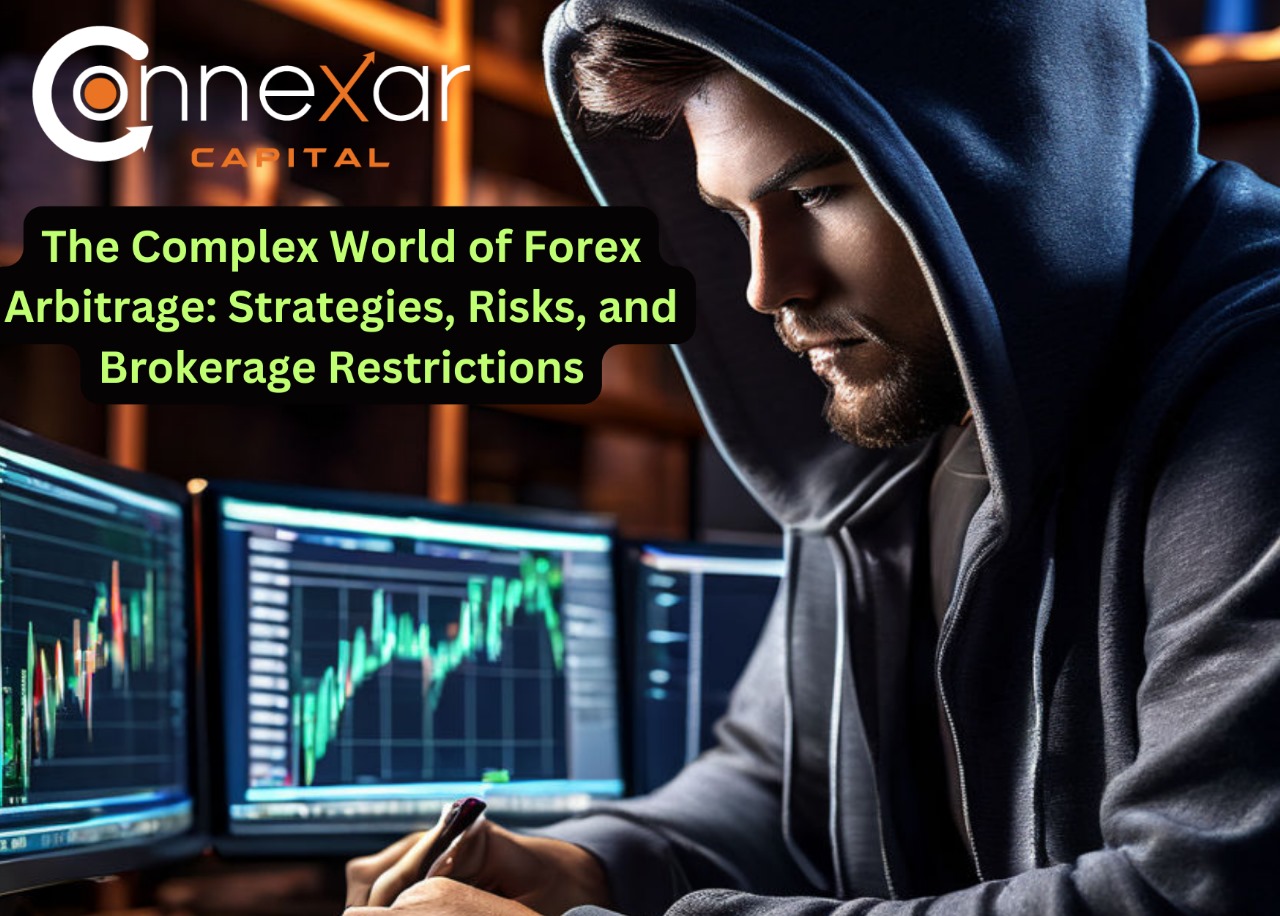
Types of Arbitrage Trading
The above traders are not allowed for a few forex brokerage firms, what is the reason behind this?
Arbitrage trading is a strategy where traders exploit price discrepancies of the same asset or related assets in different markets to make a profit with little to no risk. The essence of arbitrage is buying low in one market and selling high in another market simultaneously, capitalizing on the price difference.
Here are a few examples of arbitrage trades:
Triangular Arbitrage: In this scenario, a trader exploits the price differences between three different currency pairs involving the same base currency. For instance, suppose EUR/USD is trading at 1.10, GBP/USD is trading at 1.30, and EUR/GBP is trading at 0.85. By converting euros to pounds via EUR/GBP and then converting pounds to dollars via GBP/USD, the trader can end up with more dollars than they started with. If the final conversion results in a rate higher than EUR/USD, there's an arbitrage opportunity.
Given exchange rates:
We'll start with 1 unit of EUR.
Step 1: Convert EUR to GBP using the EUR/GBP exchange rate.
Step 2: Convert GBP to USD using the GBP/USD exchange rate.
Now, let's compare the final result (1.105 USD) with the original EUR/USD exchange rate (1.10).
If 1 EUR is directly converted to USD:
Comparing:
Since the arbitrage result (1.105 USD) is higher than the original EUR/USD exchange rate (1.10 USD), there's an arbitrage opportunity.
In this case, a trader can buy 1 EUR, convert it to GBP, and then convert the GBP to USD to end up with more dollars than they would have gotten by directly exchanging euros to dollars at the original exchange rate. This process exploits the price discrepancies between the currency pairs
EUR/USD, GBP/USD, and EUR/GBP, allowing the trader to profit from the differences in exchange rates.
Merger Arbitrage: This type of arbitrage occurs when there's a pending acquisition or merger of two companies. The prices of the acquiring and target companies' stocks may not fully reflect the deal's value due to uncertainty or market inefficiencies. Arbitrageurs can buy shares of the target company and short-sell shares of the acquiring company, aiming to profit when the deal closes and the prices converge.
Spatial Arbitrage: Spatial arbitrage exploits price differences for the same asset in different geographical locations. For example, gold may be priced differently in London and New York due to transportation costs, storage fees, or supply-demand imbalances. Traders can buy gold in the cheaper market and simultaneously sell it in the more expensive market to lock in a profit.
Statistical Arbitrage: Also known as pairs trading, statistical arbitrage involves identifying correlated assets whose prices have temporarily diverged. For instance, if two stocks historically move in tandem but one suddenly dips while the other remains steady, a trader might buy the undervalued stock and short-sell the overvalued one, anticipating that their prices will converge again.
Convertible Arbitrage: In this strategy, traders exploit price discrepancies between a company's convertible securities (such as convertible bonds) and the underlying stock. By buying the convertible security and short-selling the underlying stock, traders aim to profit from changes in the relationship between the two securities' prices.
Arbitrage opportunities are often short-lived and may require advanced technology and fast execution to capitalize on. Additionally, arbitrageurs play a crucial role in ensuring market efficiency by quickly correcting price discrepancies.
Hedge Arbitrage Trading: Hedge arbitrage trading involves exploiting price discrepancies in related assets or markets to make a profit. Traders might simultaneously buy and sell similar instruments in different markets to capitalize on small price differences. This can put pressure on liquidity providers as it may require them to constantly adjust their prices to reflect market conditions accurately. Additionally, large-scale arbitrage trading can sometimes strain liquidity in certain markets, especially if it involves high-frequency trading.
Latency Arbitrage Trading: Latency arbitrage trading relies on the speed of trade execution. Traders attempt to profit from price discrepancies that occur due to delays in information dissemination across different trading venues. This strategy often involves using sophisticated technology and high-speed connections to execute trades milliseconds faster than competitors. This can create challenges for liquidity providers as it can disrupt market efficiency and fairness, potentially leading to increased volatility and reduced liquidity.
Tick Scalping: Tick scalping is a high-frequency trading strategy where traders aim to profit from small price movements within milliseconds or microseconds. By rapidly entering and exiting positions, traders accumulate profits from numerous small gains. This strategy can increase trading volumes and order flow, which can strain liquidity providers by requiring them to constantly adjust their positions and liquidity provisions.
Use of HFT Arbitrage Emulators: Emulators are software or hardware tools that mimic the behavior of trading platforms or market participants. Traders may use emulators to test trading algorithms or simulate market conditions before executing trades in the live market. While the use of emulators itself may not directly impact liquidity providers, brokerage firms may be concerned about the potential for misuse or abuse of emulators to manipulate markets or engage in prohibited trading activities.
Forex brokerage firms may restrict or prohibit these trading strategies due to concerns about market integrity, fairness, and liquidity. High-frequency and algorithmic trading strategies can sometimes introduce inefficiencies or disrupt normal market functioning, leading to increased risks for liquidity providers and other market participants. By implementing restrictions on certain trading activities, brokerage firms aim to maintain orderly markets and protect the interests of all participants.